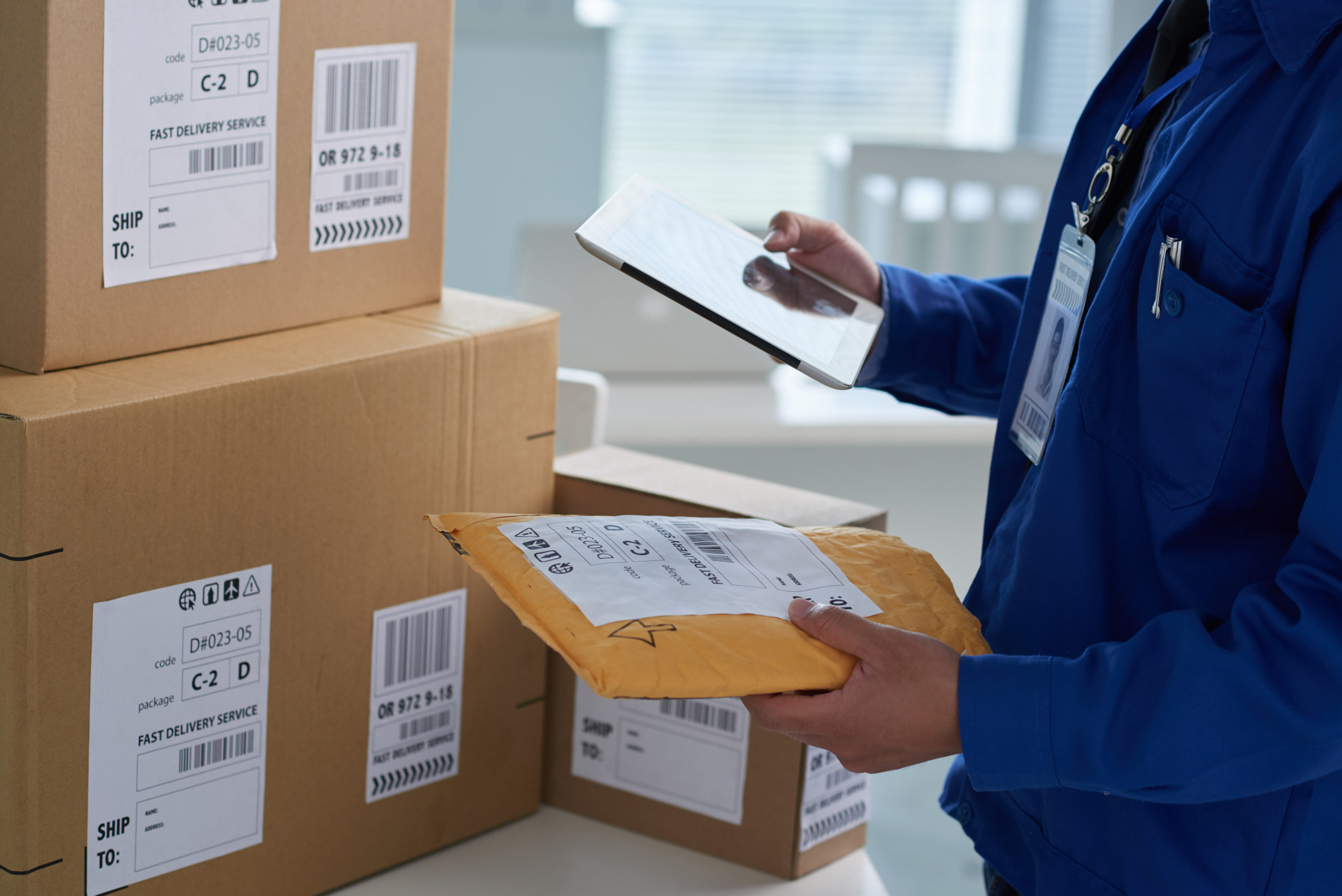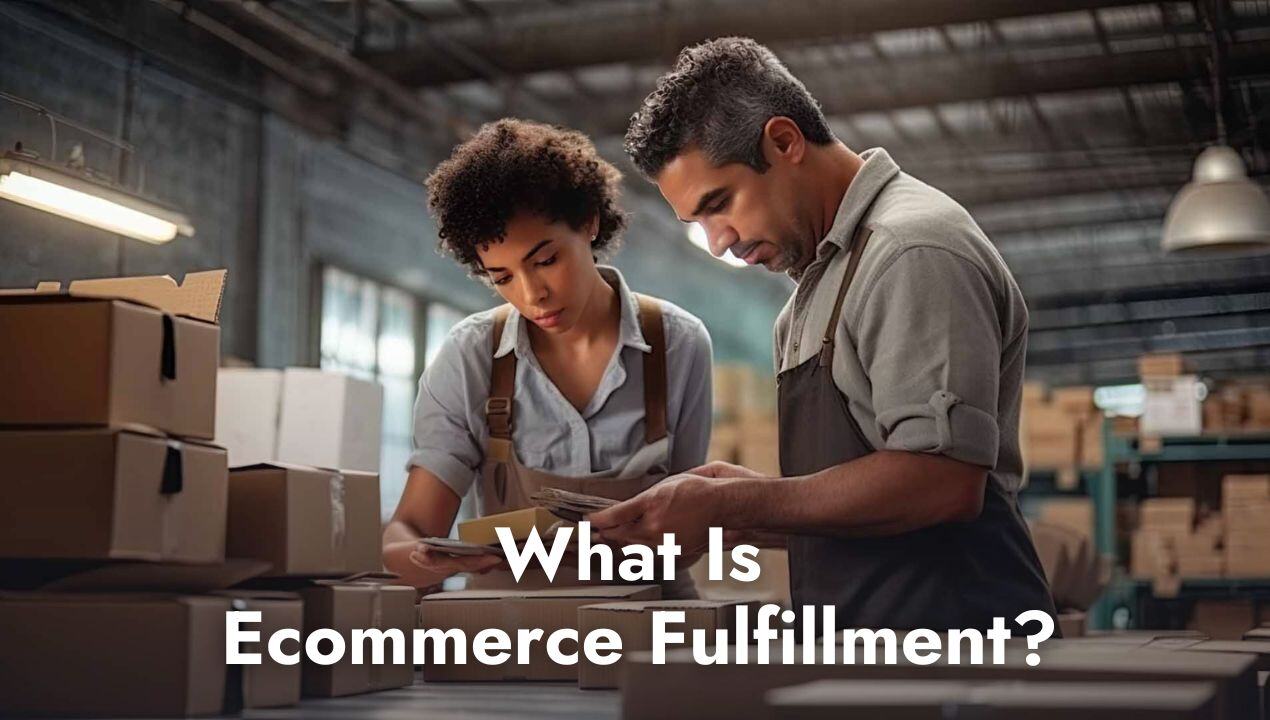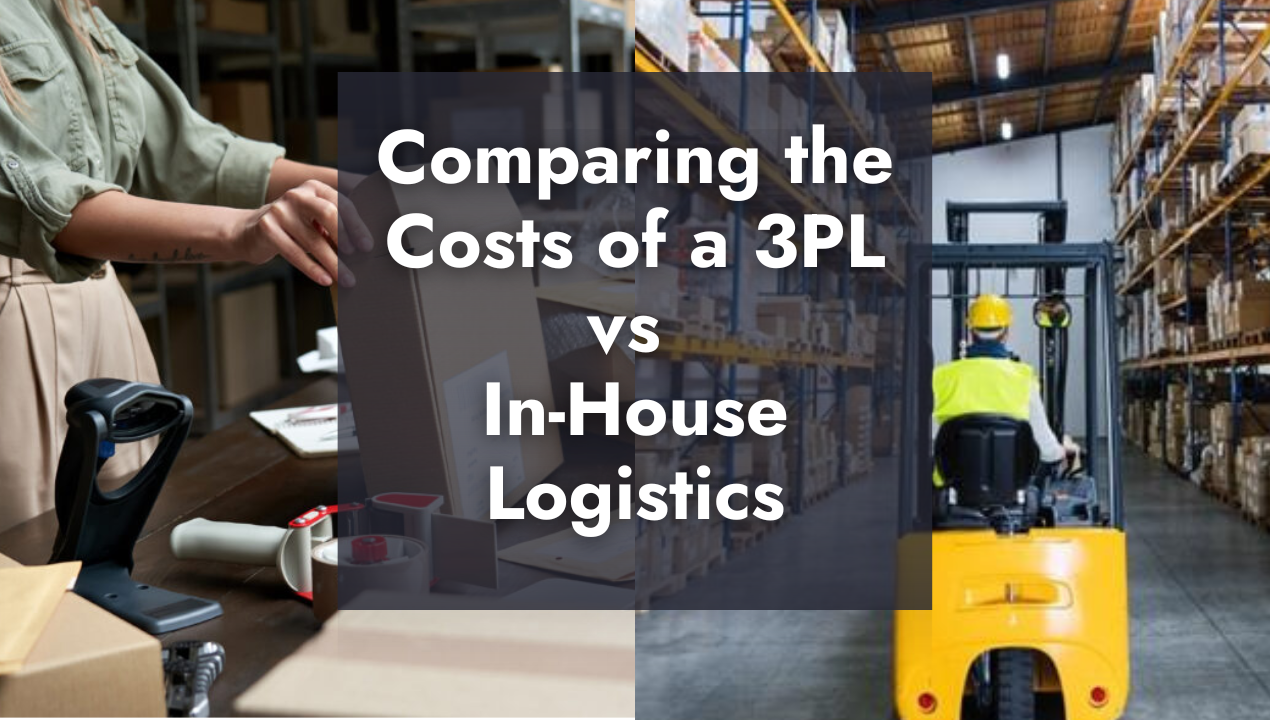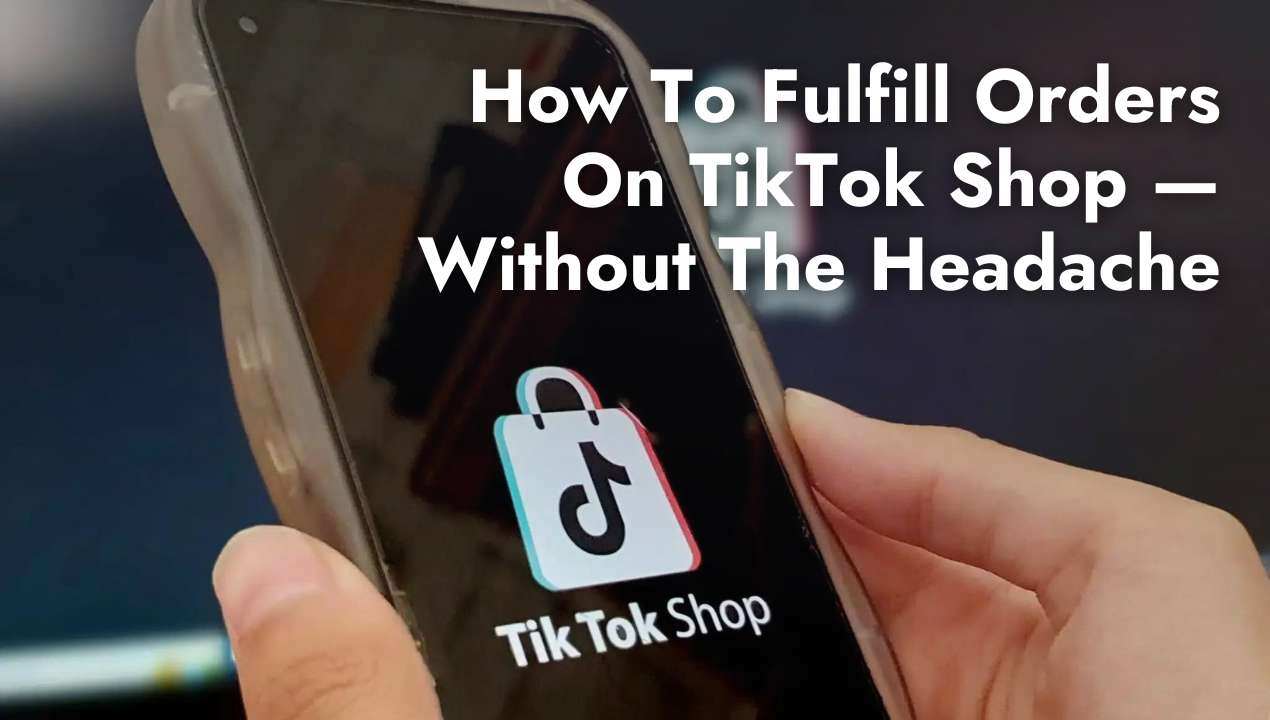Share this
What Is Order Fulfillment In Ecommerce?
by Rin Mosher on Feb. 22, 2024

Order fulfillment in commerce is a difficult but necessary element of success. Get it right, and you’ve got a world of opportunities at your feet. Get it wrong, and the resulting late deliveries, incorrect orders, and overhead costs will kill your growth.
It’s imperative to put proper effort into planning logistics and all the complexities it entails, not just to save yourself from future frustration but also to ensure the - no pun intended - fulfillment of your customers’ expectations.
In this article, we provide you with an order fulfillment definition to serve as the basis of your planning, alongside important considerations to keep in mind when arranging a solution for your business.
What Is Fulfillment In Ecommerce?
In ecommerce, fulfillment refers to the entire process involved in receiving an online order to getting it to your customer’s doorstep. This includes receiving, processing, packaging, and shipping, all the way to the last mile of delivery. The individual steps can vary depending on the business model and size of the company at hand, but the end goal remains the same - getting purchases into buyers' hands as efficiently as possible.
The Importance of Fulfillment
With the widespread normalization of ecommerce, customers have come to expect fast and reliable fulfillment services. In fact, studies have shown that shipping speed is one of the top factors influencing a customer's decision to make a purchase online. Businesses that can provide quick and efficient fulfillment have a competitive advantage over those that cannot.
But speed also goes hand-in-hand with accuracy. While people expect timely order processing and delivery, it becomes pointless if the wrong items are shipped or if they arrive damaged. In these cases, customers can become frustrated and may choose to shop elsewhere in the future.
The Responsibilities of Fulfillment In Ecommerce
Fulfillment may be one word, but it's a broad term that covers a wide range of activities. Just think about the sheer number of steps involved in getting an item from a warehouse to a final destination across the country; there's order processing, picking and packing the items, label printing, shipping carrier selection, tracking packages, handling returns or exchanges, and more.
Let’s take a closer look at the responsibilities of fulfillment in ecommerce to get a better idea of what’s needed to implement a solution:
Warehousing and Inventory Management
Warehouses are the central hub for fulfillment in ecommerce. They serve as the storage space for inventory and often also act as the location for picking and packing orders.
But having a place to store items isn't enough. In order to actually get products out the door, businesses need to keep constant tabs on where individual SKUs are placed, when they're accessed, and when they need to be refilled. Warehouse Management Systems (WMS) with Automated Order Processing are a virtual necessity to ensure accurate product quantities are available for shipment.
Order Fulfillment/Order Management
Order management starts as soon as a customer completes the online checkout process. Ecommerce platforms record and relay order details such as item names, quantities, shipping addresses, and payment information to a designated fulfillment center, where it is queued for processing.
Once the order is received by the fulfillment center, they begin the process of picking and packing the items. This involves locating the products in a warehouse or storage facility, and then carefully packaging them for shipping. There are several special considerations to keep in mind during this phase, including ensuring items are properly labeled, packaged securely with the right types of dunnage to avoid damage during transit, and set up with any necessary paperwork or inserts before being placed on trucks.
Ecommerce Shipping
Shipping is a very large component of logistics. From shipping rates and tracking mechanisms to delivery expectations, businesses need to consider a number of factors when defining a shipping strategy that works for them. Most ecommerce businesses utilize the services of a national carrier like UPS or FedEx. These service providers deliver to destinations ranging from local to international delivery using a number of shipping methods such as ground, air, and sea.
Managing ecommerce fulfillment shipping comes with its own challenges, though, like arranging partnerships with carriers, negotiating rates, scheduling pick-up times, and handling returns. It's a lot of extra work that ultimately falls on businesses when they handle the fulfillment process alone.
Working with a 3PL lessens the burden while also potentially lowering shipping costs. Many large carriers offer discounted rates to fulfillment centers because they ship high volumes of orders per month. Passed onto you, that can mean substantial savings over a self-managed arrangement.
Returns Management
In a perfect world, customers would never need to return a product they purchased. However, in reality, returns are an inevitable part of the ecommerce process. Whether it's due to a defective product or simply changing their mind about the purchase, 30% of all products ordered online are returned. This presents a huge logistical challenge for businesses.
One approach is to have a dedicated team or department solely focused on handling returns and exchanges. Another option is to outsource returns management to a third-party logistics provider that specializes in handling ecommerce returns. Either route can work - it ultimately depends on the volume of returns and the nature of the products being sold.
Types of Fulfillment
Fulfillment isn't one-size-fits-all. Every business has its own needs depending on the products it sells, its target market, and its overall business model. Here's an overview of the three main types used today:
In-House Fulfillment
In-house fulfillment is when a business chooses to handle every aspect of fulfillment on its own. In doing so, it assumes the responsibilities of finding and managing storage space, hiring staff to pick and pack orders, and coordinating with shipping carriers. While this model gives businesses complete control over their operations, it can also be time-consuming and costly.
Third-Party Fulfillment
Third-party fulfillment is an arrangement under which a business outsources its fulfillment tasks to a third-party logistics (3PL) provider. The 3PL manages all aspects of order fulfillment, including storage space, picking, packing, and shipping orders. This comes at an added cost, but knowing when to outsource can result in significant time and cost-savings for businesses that process large volumes of ecommerce orders.
Hybrid/Multi-Channel Fulfillment
Hybrid or multi-channel fulfillment is a combination of in-house and third-party fulfillment. This is a sensible warehousing strategy for businesses looking to maintain some control over their operations while also utilizing the expertise and resources of an ecommerce distribution center for certain tasks. For example, a business may use its own warehouse for storing and fulfilling orders from Shopify while outsourcing fulfillment for Amazon sales to a 3PL.
Deciding What Order Fulfillment Solution Is Right for Your Ecommerce Business
There's no question that your ecommerce business needs a strong order fulfillment system - but what does that look like? Every business has unique needs with respect to order volume, product type, and customer expectations. Consider how the following factors play into your circumstances.
Order Volume
Inventory management is a complete job in and of itself that only gets more difficult on a large scale. Thousands of orders per day require a different set of tools and resources than just a few hundred. It can be especially difficult for small businesses that may experience sudden growth or seasonal spikes.
Outsourcing order fulfillment is the best strategy in these cases, as it takes the burden off of businesses’ shoulders and allows them to focus on other aspects of their operations. Larger companies with the resources to invest in a robust in-house order fulfillment system can choose to go that route for complete control and oversight, but it always comes with more work.
Return Policy
Your online store's return policy will be a key factor in determining its ideal fulfillment solution. Brands that accept returns need to have proper systems in place to process items as they come in - a process known as reverse logistics. Returned orders, especially larger ones, can quickly become a logistical nightmare if not handled efficiently.
Consider whether you have the staff on hand to inspect and process returns in a timely manner. If not, outsourcing your fulfillment services may be the better option. Many third-party logistics providers have dedicated return processing departments and can handle this aspect of order fulfillment for you.
Product Type
Products themselves have the potential to complicate order fulfillment as well. Certain types of items, such as fragile or perishable goods, may require special handling and packaging to ensure they arrive at customers’ doorstep intact. If your business sells FDA-regulated items, there may also be additional regulations and inspections to consider, like lot tracking, FEFO/FIFO inventory management, and temperature-controlled storage.
Ecommerce businesses that sell products with cold storage requirements are almost always best off outsourcing their order fulfillment to a third-party logistics provider with the necessary facilities and expertise to properly keep and ship temperature-sensitive items. The alternative option is to invest in expensive specialized equipment and storage space, which can quickly add up for smaller businesses.
SKU Count
The number of SKUs you have will impact the complexity and cost of your fulfillment strategy. If you have a large number of SKUs, it may be more cost-effective to outsource your fulfillment so that you don't have to worry about managing inventory and shipping for all those different products. This is especially true if your SKUs are constantly changing due to new product releases or seasonal items.
Resources and Expertise
Having staff with the right knowledge and experience in handling fulfillment operations is crucial for successful in-house management. Personnel need not only warehouse and shipping expertise but also IT and customer service skills in order to meaningfully support inventory management and online order processing.
There are additional things to consider depending on the customers you sell to, as well. B2B fulfillment operations, for example, often require special labeling and packaging requirements that may be more easily handled by a third-party logistics provider with experience in wholesale.
At the end of the day, choosing a fulfillment solution as a small business is a question of in-house resources and expertise. Those with enough of both may be able to run an efficient and cost-effective in-house fulfillment operation. For others, outsourcing to a third-party logistics provider may be the best option.
Shipfusion offers a robust suite of 3PL services to ecommerce businesses in search of simplified order fulfillment. Our state-of-the-art technology and skilled team allow us to process orders quickly and accurately, ensuring a seamless experience from start to finish. Contact a member of our team to learn more today.
Share this
You May Also Like
These Related Articles

What Is Ecommerce Fulfillment?

Comparing the Costs of a 3PL vs In-House Logistics

How To Fulfill Orders On TikTok Shop – Without The Headache
- August 2025 (8)
- July 2025 (16)
- June 2025 (22)
- May 2025 (27)
- April 2025 (27)
- March 2025 (26)
- February 2025 (26)
- January 2025 (34)
- December 2024 (16)
- November 2024 (22)
- October 2024 (22)
- September 2024 (27)
- August 2024 (9)
- July 2024 (8)
- June 2024 (5)
- May 2024 (8)
- April 2024 (7)
- March 2024 (6)
- February 2024 (6)
- January 2024 (5)
- December 2023 (3)
- November 2023 (3)
- October 2023 (5)
- September 2023 (4)
- August 2023 (2)
- July 2023 (1)
- June 2023 (4)
- March 2023 (2)
- October 2022 (1)
- September 2022 (5)
- August 2022 (4)
- July 2022 (7)
- June 2022 (4)
- May 2022 (4)
- April 2022 (6)
- March 2022 (2)
- February 2022 (1)
- January 2022 (3)
- December 2021 (2)
- November 2021 (4)
- October 2021 (2)
- September 2021 (5)
- August 2021 (4)
- July 2021 (4)
- June 2021 (3)
- May 2021 (2)
- April 2021 (3)
- March 2021 (3)
- February 2021 (3)
- January 2021 (2)
- December 2020 (4)
- November 2020 (2)
- October 2020 (4)
- September 2020 (2)
- July 2020 (5)
- June 2020 (4)
- May 2020 (2)
- April 2020 (2)
- March 2020 (4)
- February 2020 (1)
- December 2019 (1)
- May 2018 (1)
- March 2018 (2)
- February 2018 (3)
- January 2018 (3)
- November 2017 (3)
- July 2017 (4)
- March 2017 (3)
- February 2017 (5)
- January 2017 (3)
- December 2016 (4)
- November 2016 (6)
- October 2016 (6)
- October 2015 (1)
- September 2015 (1)
- June 2015 (3)
- May 2015 (3)
- August 2014 (1)
- July 2014 (1)
- March 2014 (1)
- February 2014 (1)